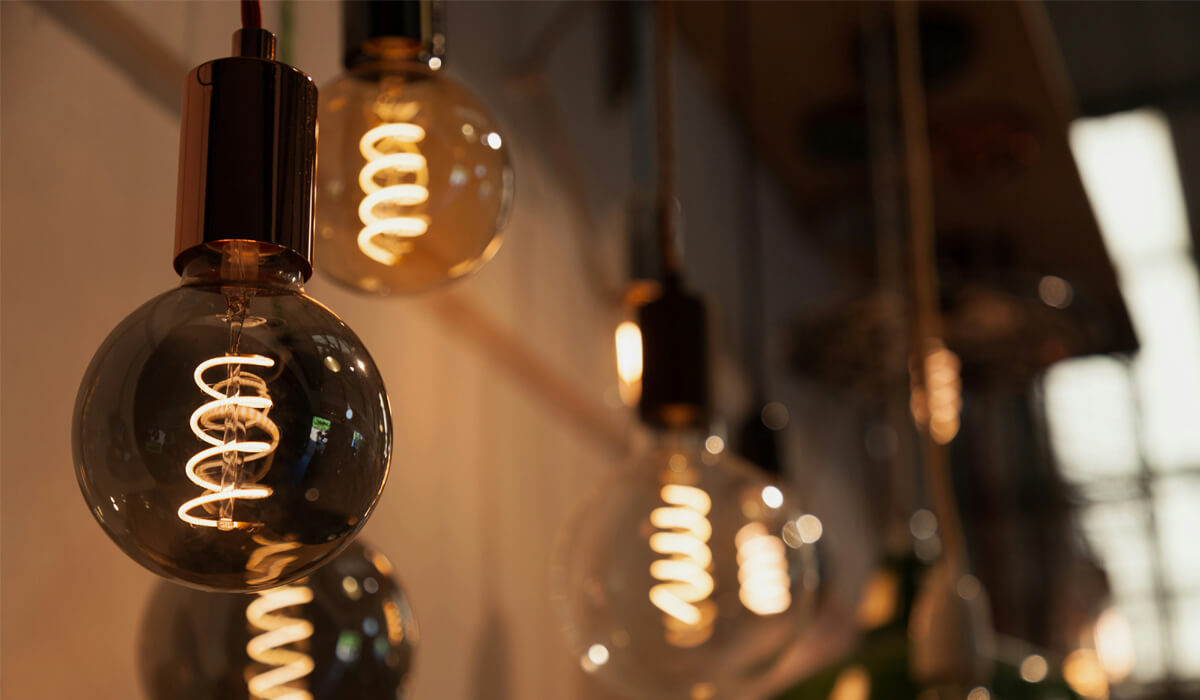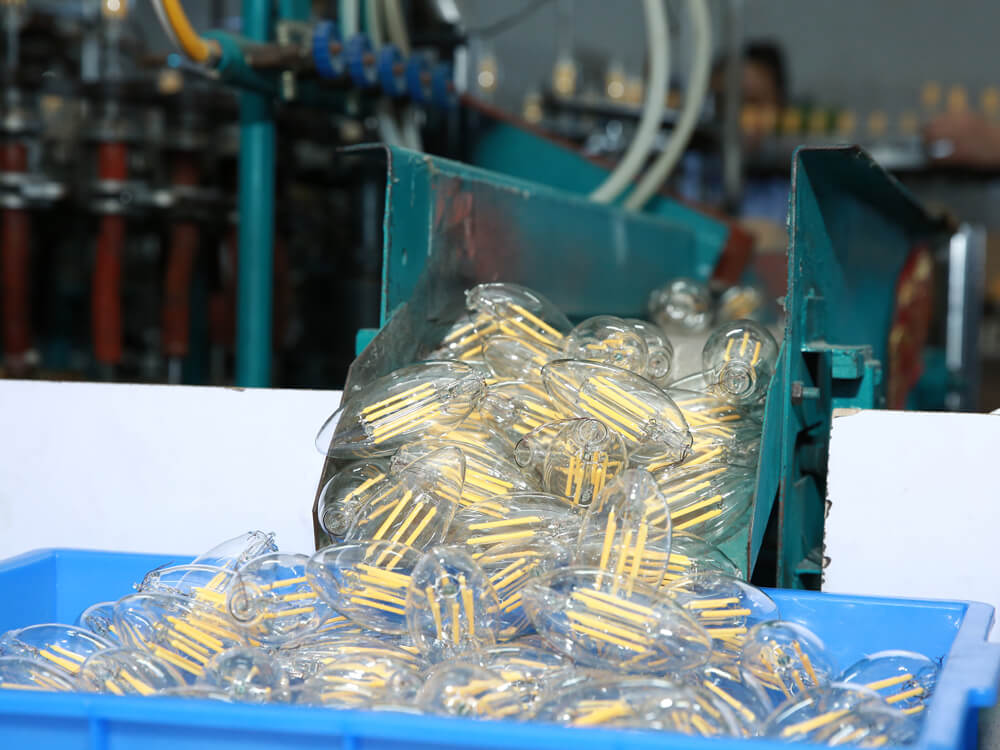The Timeless Glow: الغوص العميق في مصابيح LED الفتيلية
The warm, inviting glow of a filament lamp has an almost magical ability to transform a space. Whether it’s casting a soft amber hue over a rustic dining table or illuminating a chic loft with vintage charm, these bulbs strike a perfect balance between nostalgia and innovation. LED filament lamps, with their delicate glowing strands encased in glass, are more than just light sources—they’re a testament to how technology can honor tradition while embracing the future. In this comprehensive 3,000-word exploration, we’ll journey through the history of filament lamps, unpack the remarkable features of their modern LED incarnations, detail their meticulous production process, and share essential tips for their use. Whether you’re a homeowner, designer, or sustainability enthusiast, this guide will shed light on why LED filament lamps are illuminating the world in style.
1. The Origins of Filament Lamps: Edison’s Spark to LED Revival
The story of the filament lamp begins in the 19th century, a time when gas lamps and candles were the primary sources of artificial light. Enter Thomas Edison, whose name is forever etched in lighting history. In 1879, after thousands of experiments, Edison unveiled a commercially practical incandescent bulb that could glow for over 13 ساعات. His design—a carbonized bamboo filament sealed in a glass vacuum—marked a turning point, ushering in the age of electric lighting. While earlier inventors like Humphry Davy had demonstrated incandescence, Edison’s bulb was affordable, scalable, and reliable enough to light homes and streets, launching the electrical revolution.
Edison’s early bulbs relied on fragile carbon filaments, which burned out quickly—often within hours. By the early 20th century, the introduction of tungsten filaments transformed the industry. Tungsten’s high melting point (3,422°C/6,192°F) allowed bulbs to burn brighter and last longer, up to 1,000 ساعات. General Electric, building on Edison’s legacy, perfected tungsten filament production by 1913, making incandescent bulbs a household staple. These bulbs, with their delicate glowing wires, became icons of progress, lighting everything from factories to film studios.
لكن, tungsten incandescents had significant drawbacks. They were energy hogs, converting just 10% of electricity into light and wasting the rest as heat. A single 60-watt bulb could consume as much power as a modern laptop, driving up electricity bills. Their 1,000-hour lifespan meant frequent replacements, and their production often involved hazardous materials like mercury in alternative fluorescent designs. By the 2000s, environmental concerns and regulations—like the EU’s 2009 incandescent phase-out—pushed the industry toward greener solutions.
Cue the LED filament lamp, a brilliant reinvention of Edison’s classic. Emerging around 2010, these bulbs mimic the aesthetic of vintage incandescents while leveraging Light Emitting Diode (قاد) technology, first developed by Nick Holonyak in 1962. Manufacturers like Huiyee Tech pioneered LED filaments by arranging tiny LED chips on thin substrates, creating the illusion of glowing tungsten wires. The result? Bulbs that look like 1879 originals but perform like 21st-century marvels.
Compared to tungsten bulbs, LED filament lamps are a leap forward. A 4-watt LED filament bulb delivers the same 400-800 lumens as a 40-watt incandescent, slashing energy use by 80-90%. Their lifespan stretches to 25,000-50,000 hours—3 to 5 years of daily use—reducing replacement costs. For a household with 20 bulbs, this translates to annual electricity savings of $100-$300, potentially thousands over the bulbs’ lifetime, based on U.S. Department of Energy estimates. Environmentally, LEDs are mercury-free and produce minimal heat, cutting cooling costs and landfill impact. From Brooklyn bistros to Tokyo boutiques, LED filament lamps have revived the Edison aesthetic while championing sustainability, proving that beauty and efficiency can coexist.
2. Modern Marvels: Features of LED Filament Lamps
What makes LED filament lamps a standout choice for today’s homes and businesses? It’s their seamless blend of vintage charm, cutting-edge technology, and practical versatility. Let’s explore the features that make these bulbs shine.
Glass Shells for Superior Heat Dissipation
Unlike early LEDs with plastic casings, filament lamps use borosilicate glass shells, which excel at dissipating heat. Operating at surface temperatures below 60°C (140°F), these bulbs stay cool to the touch, enhancing safety and longevity. The transparent or tinted glass showcases the glowing filaments, making them ideal for exposed-bulb fixtures like industrial pendants or retro chandeliers.
Flexible LED Filaments
Modern LED filaments are a triumph of engineering. Using Chip on Board (COB) or Surface-Mount Device (SMD) technology, tiny LED chips are mounted on ceramic or glass substrates, forming long (50-100مم) or short (20-30مم) filaments. Artisans can hand-wind these into spirals, loops, or even bespoke shapes like stars, adding a custom touch for luxury installations. This flexibility ensures optimal light distribution, reducing glare in open designs.
Tunable Color Temperatures
LED filament lamps offer a spectrum of color temperatures to suit any mood or setting. Warm white (1800K-3,000K) mimics candlelight, perfect for cozy bedrooms, while cool white (4,000K-6,500K) boosts focus in offices. Precise phosphor coatings ensure consistent hues, meeting diverse needs from intimate restaurants to clinical workspaces.
Dimmable Brilliance
Dimmability is a hallmark of modern LED filament lamps. Compatible with most TRIAC or 0-10V dimmers, they transition smoothly from 10% ل 100% brightness. Some models feature “warm dim” technology, shifting to warmer tones at lower settings, mimicking incandescent behavior. This ensures flicker-free performance, enhancing ambiance without compatibility woes.
Unmatched Lifespan and Savings
With lifespans of 25,000-50,000 ساعات (3-5 years at 3 hours daily), these bulbs outlast incandescents by a factor of 25. Their energy efficiency—using 4-8 watts for 40-60-watt equivalents—saves households $100-$300 annually, scaling to thousands over the bulb’s life. For businesses, the savings are exponential, with lower maintenance costs to boot.
Diverse Shell Designs
Glass shells come in varied shapes (A19, ST64, G25, BT180) and finishes (clear, frosted, amber), complementing the “light luxury” trend in minimalist and eco-conscious interiors. From petite globe bulbs for sconces to oversized pear shapes for statement pieces, there’s a design for every aesthetic.
Protective Packaging
Fragile glass demands careful handling. Foam inserts tailored to each bulb’s shape ensure safe shipping, minimizing breakage. Eco-friendly options like biodegradable foam are gaining traction, aligning with the bulbs’ green ethos.
These features have made LED filament lamps a consumer favorite, earning praise for their “vintage glow with modern smarts” on platforms like Amazon. بأسعار معقولة في $2-5 per bulb, they’re a staple in homes, المقاهي, and boutique hotels, blending sustainability with style.
3. Crafting Excellence: The Production Process of LED Filament Lamps
Creating an LED filament lamp is a blend of precision engineering and artisanal care. At facilities like Huiyee Tech’s, every bulb undergoes a rigorous process to ensure quality, with defect rates kept below 0.1%. Here’s how these luminous wonders come to life.
Step 1: Glass Shell Inspection
The journey begins with the glass bulb shells. Each is 100% inspected using automated vision systems and UV light to detect micro-cracks, bubbles, or thickness inconsistencies. Only flawless shells—typically 98% of the batch—proceed, ensuring durability and thermal performance.
Step 2: Shell Cleaning
Approved shells are cleaned in ultrasonic baths with deionized water and mild detergents, removing dust and oils. They’re rinsed in pure water cascades and air-dried in cleanrooms to prevent residue, which could cause hotspots or clouding.
Step 3: Filament and Driver Assembly
Custom LED drivers, optimized for efficiency (power factor >0.9), are designed in-house. Filaments are hand-wound by technicians using micro-tools, arranging LED chips on substrates, and coating them with phosphor for uniform light. Each filament undergoes a 30-minute burn-in test to catch defects. AI vision systems ensure color and brightness consistency.
Step 4: Bulb Assembly
The driver is fitted into the bulb’s base (E26/E27), connected to filaments via gold-plated contacts for reliability. The assembly is inserted into the glass shell under vacuum, filled with argon gas to prevent oxidation, and sealed with laser fusion or epoxy.
Step 5: Aging and Testing
Sealed bulbs face 8+ hours of aging tests in environmental chambers, cycling through temperature (-20°C to 60°C), humidity, and voltage stress. Spectrometers monitor lumen output and color fidelity. Only bulbs maintaining 90% brightness pass.
Step 6: Final Cleaning and Inspection
Bulbs are plasma-cleaned to remove particulates, followed by a second 100% inspection for electrical, photometric, and aesthetic quality. Approved bulbs are packed in foam-lined trays, shrink-wrapped, and batch-sampled for certifications (أول, م, RoHS).
Step 7: Shipping
Packaged bulbs are loaded into containers with desiccant packs to prevent moisture damage during global transit. The entire process, spanning 72 hours per batch, balances automation for scale with handcrafted precision for quality, delivering bulbs that shine reliably.
4. Usage Tips: Maximizing Your LED Filament Lamp’s Potential
To keep your LED filament lamps glowing brilliantly, follow these simple precautions to ensure safety, طول العمر, and performance.
Indoor Use Preferred
These bulbs are not waterproof (IP20 rating), so use them indoors to avoid moisture damage. For outdoor settings like patios, pair with IP65-rated waterproof enclosures to protect against rain or humidity, preserving the 3-5-year lifespan.
Voltage Compatibility
Always match the bulb’s voltage to your region: 120V for the U.S. (E26 base) and 230V for Europe (E27 base). Using a 120V bulb on a 230V grid risks immediate failure. Check labels or use universal-voltage models (100-240V) when available.
Dimmable Bulb Considerations
For dimmable lamps, select compatible TRIAC or 0-10V dimmers to prevent flickering or buzzing. Test pairings beforehand, and consult dimmer compatibility charts from brands like Leviton or Lutron for seamless performance.
Additional Tips
Avoid fully enclosed fixtures that trap heat, as temperatures above 70°C can trigger thermal throttling, dimming output. Clean bulbs with a microfiber cloth, avoiding harsh chemicals. Recycle responsibly via local e-waste programs, as LEDs are mercury-free.
For more lighting insights or technical support, contact us at Sales@huiyeetech.com. Let us help you keep your spaces brilliantly lit.
Write in the end:
LED filament lamps are more than bulbs—they’re a bridge between Edison’s pioneering vision and today’s sustainable ethos. With their energy efficiency, long lifespan, and versatile designs, they’re redefining how we light our world. Ready to make the switch? Start with a single filament bulb and experience the glow that’s captivated designers and homeowners alike.
For custom solutions, bulk orders, or expert advice, reach out at Sales@huiyeetech.com. Here’s to a brighter, greener tomorrow.
 English
English العربية
العربية Français
Français Deutsch
Deutsch Italiano
Italiano Polski
Polski Português
Português Русский
Русский Español
Español Українська
Українська



